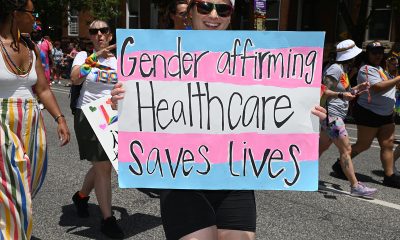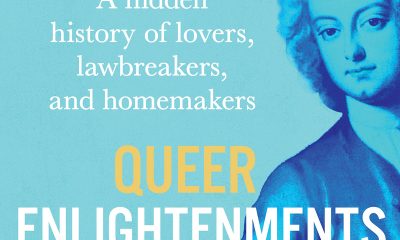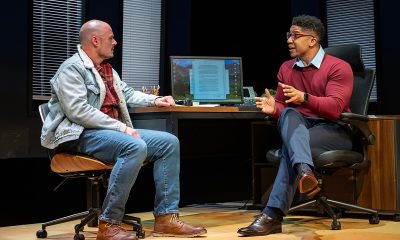Books
Queer Visitors: How drag and Oz are inspiring a new adult LGBTQ book club
The new adult LGBTQIA+ book club uses “The Wonderful Wizard of Oz” to explore themes of self-acceptance, found family, and community with special drag performances.

When looking at media, few works of literature have achieved the critical success and enduring resonance with the LGBTQ community that “The Wonderful Wizard of Oz” has.
From its messages of radical acceptance, home, and belonging, to its subversions of gender norms and its memorable, fluidly gendered characters, “The Wizard of Oz” has remained a queer cultural touchstone more than 125 years after its first publication.
The book itself offered many LGBTQ readers one of their first glimpses of a world that celebrated differences that might otherwise be considered “queer.” The 1939 MGM film adaptation, starring gay icon Judy Garland, further cemented Dorothy—and Oz—into LGBTQ culture, contributing (somewhat debatedly) to the origin of the term “Friend of Dorothy” as a euphemism for LGBTQ individuals and helping to establish rainbows as a queer symbol.
The story also inspired the wildly popular musical “Wicked,” which reimagines the witches of Oz and is rich with LGBTQ subtext.
Given all this, it makes perfect sense that an adult LGBTQ book club would choose to start its journey in the fantastical world L. Frank Baum created with Oz.
Queer Visitors, a book club made for LGBTQIA+ adults and named after a comic strip L. Frank Baum published in 1904 called “Queer Visitors from the Marvelous Land of Oz,” created by Drag Story Hour—a national non-profit whose goals include “celebrating storytelling through the dynamic art of drag performance”—chose to kick off this new venture with “The Wonderful Wizard of Oz.”
The Washington Blade had the chance to speak with Jonathan Hamilt, co-founder of Drag Queen Story Hour, about what the LGBTQ adult book club will entail, why now, and why Oz.
When asked what spurred the choice to start an adult LGBTQ book club, Hamilt explained that the club has been a long time in the making.
“‘Drag Story Hour’ is celebrating 10 years of stories this year. We’ve always served families and children reading public books… but we really wanted to expand our programming for an adult-focused book club that was basically a drag story hour for adults only,” Hamilt said.
For years, the organization has worked to inspire children and promote diversity across the U.S.—and the globe. Now, they are venturing over the rainbow into adult territory.
“It’s like Oprah’s book club, but gay, where we will have a monthly book club… with a virtual experience with the drag artist and a subject matter expert of the book.”
For their first month, Queer Visitors went with drag queen (and face of Queer Visitors) Nana Tuckit from Portland, Ore., and Tori Calamito—a self-described “Oz historian” and LGBTQ ally known as “The Oz Vlog” on social media—to stand alongside the club online.
“Nana Tuckit brings a really fun energy to the space… and Tori is an Oz historian and can tell us all the things about that world,” Hamilt said when explaining their choice to go with Tuckit and Calamito. “I think the two of them will be a really amazing powerhouse chatting about this book.”
Calamito and Tuckit both sat down with the Blade to discuss why they chose to partner with Drag Queen Story Hour and Queer Visitors—both going into detail about why “The Wizard of Oz” is a perfect pick for the first meeting of the book club, explaining that LGBTQ people can see themselves in the story.
“‘The Wizard of Oz’ at its core, is a story about self-actualization and achieving self-actualization alongside your found family,” Tori Calamito told the Blade. “And I think those are themes that the LGBTQIA+ community can really relate to.”
She sees “The Wizard of Oz” as a story that resonates universally: “I think it’s a story everyone knows. So no matter where you’re coming from, in society, where you live in the country, where you hail from, everybody can hear Oz and go, ‘Aha, there’s some sort of association in your memory.’”
“Queer people are just naturally drawn to those stories where the interesting oddball characters are accepted and welcomed and present and they’re celebrated,” Nana Tuckit said. “I feel like it’s important right now to tell people’s stories to understand perspectives that are different… there is such a huge range of lives people are living.”
“’The Wizard of Oz’ is such an interesting cultural capstone… all generations know ‘The Wizard of Oz’ in some capacity… there are so many original books and I think they’re so innately queer if you read between the lines,” Hamilt said. “One way to look at it: it’s just so campy and so colorful and so fun… and this idea of queer diaspora… Dorothy being displaced or in a new land, kind of finding her chosen family… it’s kind of like an allegory for the whole queer experience.”
Calamito echoed Hamilt’s points and said her LGBTQ followers—more than 375,000 combined on Instagram and TikTok—helped show her that.
“You know, when I first read the L. Frank Baum original series of Oz books, I didn’t pick up on the very queer, coded themes and the gender fluid themes because reading it through the lens of a straight cis woman—just those things didn’t hit me,” she said. “But interacting with other folks in the broader [Oz] fandom opened my eyes to how obvious those themes are.”
“When we hear stories about those kinds of people [queer], and they aren’t the villains of the story—they aren’t the people who are being scrutinized and condemned or picked apart for those aspects of themselves—I think that’s what gets people so excited,” Tuckit told the Blade. “We need to create some worlds that are super fun for queer people to experience, because we need to know that we can be the main character, the hero, the savior. We can be all of the good things, the magical things.”
Hamilt also noted that the childlike wonder the Oz books and story have been able to provide to people for over a century reflects the need to heal their internal child selves.
“Queer adults have to do a lot of inner child healing… getting back to the magic of books where the excitement maybe first happened for you… it brings a lot of joy at face value with this book club that makes you feel like a kid at heart,” Hamilt said.
Tuckit went on to emphasize how the feeling of community—which has been life-saving for LGBTQ people when families have, and continue to, shun them for coming out—is present throughout the book.
“Even at the end of the book, The Lion, the Scarecrow, and the Tin Woodman all become the king of their own… the people have chosen you to be this figure for them, because they know you’re going to be supportive of them and looking out for them,” Tuckit said.
That community, she explained, can help the reader find what Dorothy was searching for when her house landed in Oz.
“If I think about what feels like home for me, it’s definitely not necessarily the physical place, but it is about who I’m with and the people that I’ve created my community with.”
Hamilt also saw the opportunity for book club members to create real-world connections using the club as a goal.
“It’s really easy as an adult to get sucked into your phone or social media… my hope is that this book club gets a physical book in your hands… gets you to meet other people that are excited about a really dorky topic… bring back this idea of real community.”
The act of drag has long been a community- and family-maker in the LGBTQ world. From ballroom families to the unique feeling of love one can get when watching a truly moving piece of drag, the art form has community woven into its history that adds an additional layer to the complexities of LGBTQ relationships.
“Drag is starting to represent just more of a wide range of people and experiences, just reflecting what we are as people… it’s all the same,” Tuckit said. “Drag artists are just expressing that something inside them that they want to get out and show the rest of the world.”
“I love Drag Story Hour. I take my own daughter, we go to drag brunch. We love drag queens in this household. And it harkens back to classic theater and pantomime in the days of Shakespeare,” the Oz historian said, highlighting that drag has been around for centuries, despite what anti-LGBTQ conservatives say.
“The opposition to Drag Story Hour isn’t new. We’ve been around for 10 years, and there’s always been an ebb and flow,” Hamilt explained. “One common comment we hear from people who are homophobic or transphobic is, ‘Why do you only read to kids? Why don’t you read to adults?’ And the truth is, we do! We read to elderly people, we go into hospitals—we read to a wide variety of audiences. So, if the issue really is age, we’ve even started side projects just for adults. Will there be protests? Opposition? Pushback when it’s only adult-focused programming? Absolutely. Because it’s never really been about children. It’s about control, hatred, and trying to erase the queer experience altogether.”
When asked what she hopes Queer Visitors brings to all fans of Oz, LGBTQ members, or allies, Calamito said she hopes it helps create good feelings during difficult times for members of the LGBTQ community.
“I hope this fosters a safe space for people to have good community outreach,” she said. “I hope this becomes a place where we can dispel fear.”
For Hamilt, the goal is both playful and proud: “Stories are for everybody… the goal is to celebrate self-expression and imagination through glamorous, playful, proud, queer role models… the more we love and accept the diversity of the world, it makes us more empathetic.”
For more information on joining the book club, where to pick up a copy, and how to get involved, visit www.dragstoryhour.org/queer-visitors.
Books
New book highlights long history of LGBTQ oppression
‘Queer Enlightenments’ a reminder that inequality is nothing new
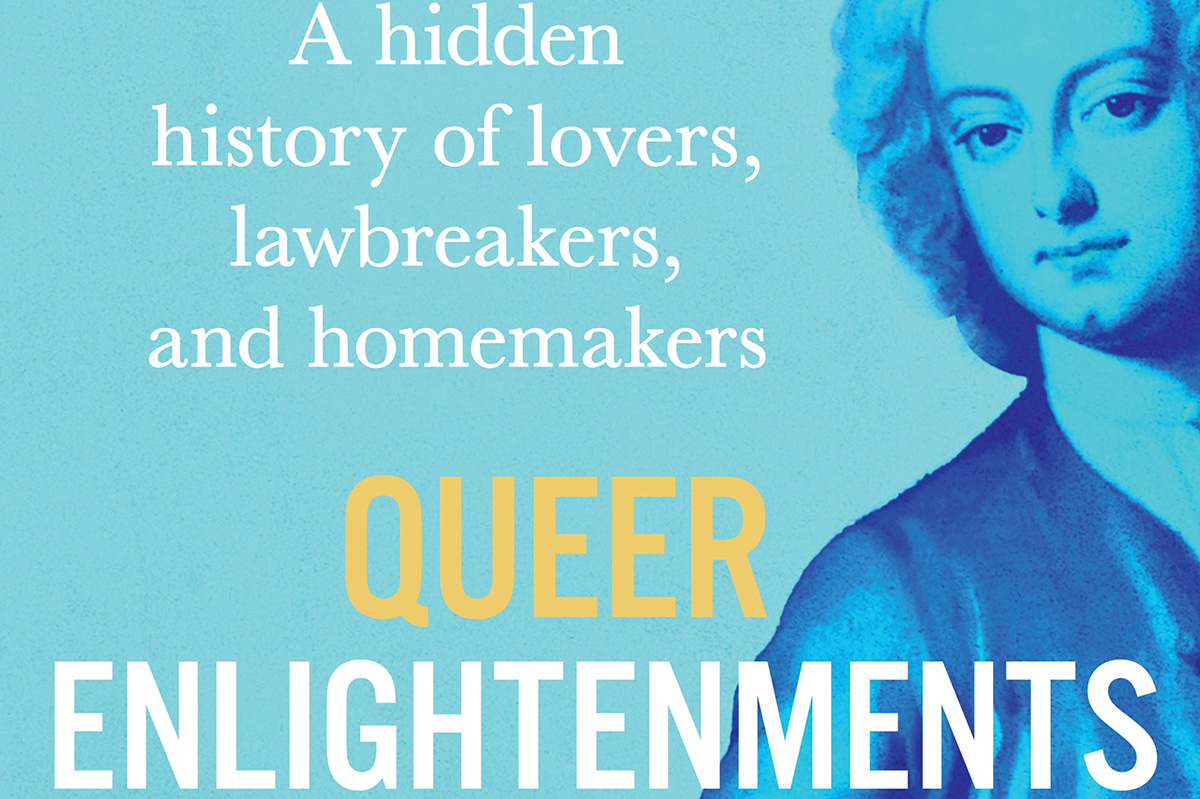
‘Queer Enlightenments: A Hidden History of Lovers, Lawbreakers, and Homemakers’
By Anthony Delaney
c.2025, Atlantic Monthly Press
$30/352 pages
It had to start somewhere.
The discrimination, the persecution, the inequality, it had a launching point. Can you put your finger on that date? Was it DADT, the 1950s scare, the Kinsey report? Certainly not Stonewall, or the Marriage Act, so where did it come from? In “Queer Enlightenments: A Hidden History of Lovers, Lawbreakers, and Homemakers” by Anthony Delaney, the story of queer oppression goes back so much farther.

The first recorded instance of the word “homosexual” arrived loudly in the spring of 1868: Hungarian journalist Károly Mária Kerthbeny wrote a letter to German activist Karl Heinrich Ulrichs referring to “same-sex-attracted men” with that new term. Many people believe that this was the “invention” of homosexuality, but Delaney begs to differ.
“Queer histories run much deeper than this…” he says.
Take, for instance, the delightfully named Mrs. Clap, who ran a “House” in London in which men often met other men for “marriage.” On a February night in 1726, Mrs. Clap’s House was raided and 40 men were taken to jail, where they were put in filthy, dank confines until the courts could get to them. One of the men was ultimately hanged for the crime of sodomy. Mrs. Clap was pilloried, and then disappeared from history.
William Pulteney had a duel with John, Lord Hervey, over insults flung at the latter man. The truth: Hervey was, in fact, openly a “sodomite.” He and his companion, Ste Fox had even set up a home together.
Adopting your lover was common in 18th century London, in order to make him a legal heir. In about 1769, rumors spread that the lovely female spy, the Chevalier d’Éon, was actually Charles d’Éon de Beaumont, a man who had been dressing in feminine attire for much longer than his espionage career. Anne Lister’s masculine demeanor often left her an “outcast.” And as George Wilson brought his bride to North American in 1821, he confessed to loving men, thus becoming North America’s first official “female husband.”
Sometimes, history can be quite dry. So can author Anthony Delaney’s wit. Together, though, they work well inside “Queer Enlightenments.”
Undoubtedly, you well know that inequality and persecution aren’t new things – which Delaney underscores here – and queer ancestors faced them head-on, just as people do today. The twist, in this often-chilling narrative, is that punishments levied on 18th- and 19th-century queer folk was harsher and Delaney doesn’t soften those accounts for readers. Read this book, and you’re platform-side at a hanging, in jail with an ally, at a duel with a complicated basis, embedded in a King’s court, and on a ship with a man whose new wife generously ignored his secret. Most of these tales are set in Great Britain and Europe, but North America features some, and Delaney wraps up thing nicely for today’s relevance.
While there’s some amusing side-eyeing in this book, “Queer Enlightenments” is a bit on the heavy side, so give yourself time with it. Pick it up, though, and you’ll love it til the end.
The Blade may receive commissions from qualifying purchases made via this post.
Books
A history of lesbian workarounds to build family
Fighting for the right to have and raise kids
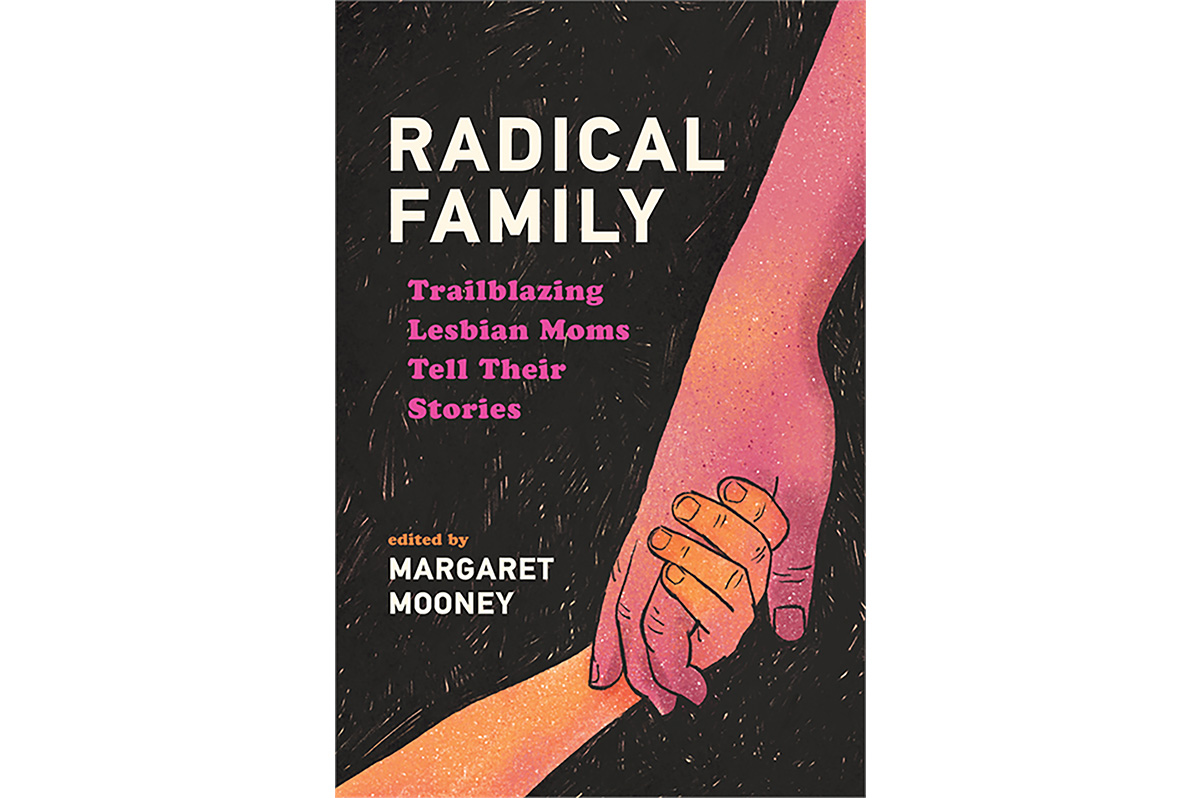
‘Radical Family: Trailblazing Lesbian Moms Tell Their Stories’
Edited by Margaret Mooney
c.2025, Wisconsin Historical Society Press
$20/150 pages
You don’t have a white picket fence with an adorable gate.
The other parts of the American Dream – the house in the suburbs, a minivan, and a big backyard – may also be beyond your reach. You’ve never wanted the joyous husband-wife union, but the two-point-five kids? Yeah, maybe that’s possible. As in the new book “Radical Family,” edited by Margaret Mooney, it’s surely more so than it was in the past.

Once upon a time, if a lesbian wanted to raise a family, she had two basic options: pregnancy or adoption. That is, says Mooney, if she was willing to buck a hetero-centric society that said the former was “selfish, unnatural and radical” and the latter was often just simply not possible or even legal.
Undaunted, and very much wanting kids, many lesbians ignored the rules. They built “chains” of women who handed off sperm from donor to doctor to potential mother. They demanded that fertility clinics allow single women as customers. They wrote pamphlets and publications aimed to help others become pregnant by themselves or with partners. They carefully sought lesbian-friendly obstetricians and nurses.
Over time, lesbians who wanted kids were “emboldened by the feminist movement and the gay and lesbian rights movement” and did what they had to do, omitted facts when needed, traveled abroad when they could, and found workarounds to build a family.
This book tells nine stories of everyday lesbians who succeeded.
Denise Matyka and Margaret McMurray went to Russia to adopt. Martha Dixon Popp and Alix Olson raised their family, in part and for awhile in conjunction with Popp’s husband. Gail Hirn learned from an agriculture publication how to inseminate herself. MC Reisdorf literally stood on her head to get pregnant. Mooney says that, like most lesbian parents then, she became a mother “without any safety nets…”
Such “struggles likely will feel familiar as you read about [the] desire to become parents…” says Mooney. “In short, these families are ordinary and extraordinary all at once.”
In her introduction, editor Margaret Mooney points out that the stories in this book generally take place in the latter part of the last century, but that their relevance is in the struggles that could happen tomorrow. There’s urgency in those words, absolutely, and they’re tinged with fear, but don’t let them keep you from “Radical Family.”
What you’ll see inside these nine tales is mostly happy, mostly triumphant – and mostly Wisconsin-centric, though the variety in dream-fulfillment is wide enough that the book is appropriate anywhere. The determination leaps out of the pages here, and the storytellers don’t hide their struggles, not with former partners, bureaucracy, or with roadblocks. Reading this book is like attending a conference and hearing attendees tell their tales. Bonus: photos and advice for any lesbian thinking of parenthood, single or partnered.
If you’re in search of positive stories from lesbian mothers and the wall-busting they did, or if you’ve lived the same tales, this slim book is a joy to read. For you, “Radical Family” may open some gates.
The Blade may receive commissions from qualifying purchases made via this post.
Books
Florida’s war on Black, queer lives hidden no more
New book ‘American Scare’ exposes truth of decades of erasure, attacks
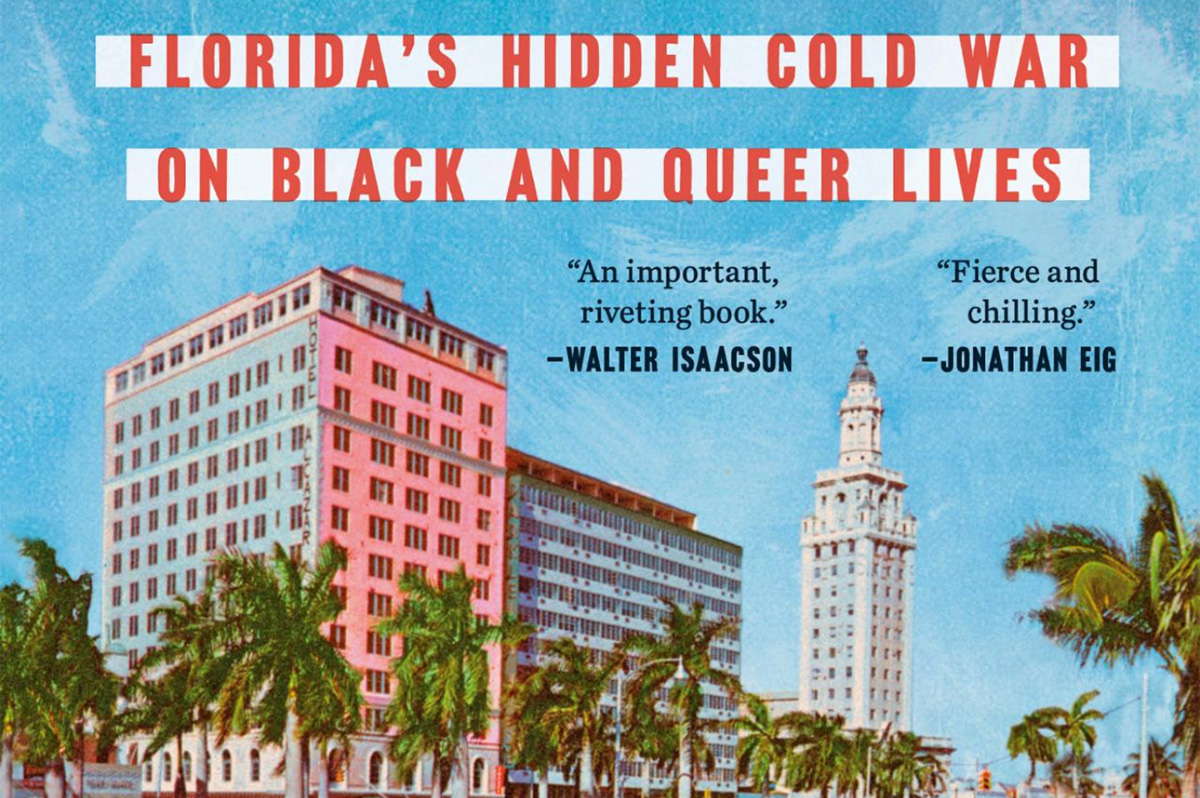
‘American Scare: Florida’s Hidden Cold War on Black and Queer Lives’
By Robert W. Fieseler
“What’s with Florida?,” Bobby Fieseler, disgusted, asked after completing his initial research into the vicious investigation of suspected homosexual teachers by the Florida Legislative Investigation Committee (FLIC) in the 1950s. How did the official animus toward all things queer happen in Florida, Fieseler pitched his publisher. We can be grateful Dutton gave him the green light for “American Scare, Florida’s Hidden Cold War on Black and Queer Lives.”

Fieseler’s book is a masterpiece of archive activism that begins in a rental van escaping Florida with some 20 boxes of historical documents meant to be seen by no one. The cartons contained a secret second copy of materials that had been held back from the jaws of the Florida State Archives in Tallahassee. Soon, more folders would surface with unredacted materials. “There are friends of Dorothy in any system,” he explains his archival detective work with a wink.
What’s with Florida? In the 1950s, it was all about legislators exposing politically helpless homosexuals to justify the committee’s investigations and budgets. The FLIC documents reveal the names of the accused “perverts,” the cops who raided the restrooms, the terrified queer informants and the professional interview techniques that would extract confessions from the victims. On another level, this was about old-school Southern racists determined to stop integration at all costs with intention to weave lies about Communist infiltration of the NAACP. Finally, Fieseler encountered first-hand an official determination to erase and lock-up this history. The statewide obsession with erasing history continues to this day. The Florida Department of Transportation this year painted over the community rainbow crosswalk memorial to the Pulse nightclub massacre victims in Orlando.
“American Scare” is such a fully documented investigation of what unfolded, it will be impossible to paint over the magnitude of this assault. The book bears witness in gory detail to the ruination of private people that exceeds in pure perniciousness the more famous “Lavender Scare.” Although the “Lavender Scare” purged many more individuals, it was about the U.S. Department of State firing public officials slimed as “pinstripe twerps.” The Florida investigations were a statewide purge using a dark politics of exposure of schoolteachers leading private lives. Fieseler quotes Remus Strickland, the head homo-hunter and executive director of the Southern Association of Intelligence Agents formed in response to the Supreme Court’s Brown v. Board of Education desegregation decision (1954), “If the Committee’s first pursuit (race and Communism) was a mandate, its second pursuit (homosexuals) was an opportunity.” Remus (that’s really this Southerner’s name) explained years later without remorse, “We first looked at the University of Florida for Communists….then we came back and did the homosexual purge.” Fieseler’s archival research reveals how far-right politicians and investigators like Strickland characterized Communists, African Americans (through the NAACP) and homosexuals as aligned “treasonously in a subversive societal infestation.”
The whole show was the creation of a wily, populist politician — a Florida “Pork Chopper” — Charley Johns, president of the Florida Senate. “Pork Choppers,” the rural, white Northern Florida wing of the old Democratic Party, controlled the state legislature from the 1930s to the 1960s. They were strongly opposed to integration, Communists, homosexuals, reapportionment and government reform. Johns owned the Charley E. Johns Insurance Agency, which insured state agencies. Fieseler’s history brings these North Florida politicians into grotesque focus. Their “power had lynched history,” he writes about his passion to excavate how they sealed and redacted the records so they would never face responsibility for their actions.
“American Scare” reveals how these Pork Choppers were willing to crush homosexuals as an instrument to maintain power. Their victims were isolated gay and lesbian teachers who could only plead for mercy, vanish or inform on one another. They were entrapped by the system itself. Fieseler tells the story of how Remus Strickland pulled Miss Poston, a physical education teacher out of her classroom surprising her with a tape recorder and a request to give a misdirecting statement about the prevention of child molestation. Suddenly Remus changed the subject: “Miss Poston, in your acts with Miss Bradshaw whom you referred to on this record, would she play the part of the aggressor…..She was known as the butch is that true?….Was there any occasion of any oral copulation?” He closed in for the kill, “Could there have been more than one time”? Miss Poston caved, “Possibly but if so only one more time.” The reel-to-reel tape is turning.
Concert pianist and music teacher William James Neal received the same taped grilling. Remus begins the interview, “You’re an educated Nigra,” confronting Neal with testimony he was a homosexual “nigra.” Years later, Neal remembered, “He told me I would never teach within the continental limits of the United States. He said he had proof I was a homosexual.” An African-American concert pianist, Neal had extensively toured the U.S. playing with major orchestras and hosting his own radio program in Florida. Neal had the self-respect and courage to take his illegal termination to the Florida Supreme Court. In 1962, the court ruled in his favor (Neal v. Bryant) handing Remus Strickland a devastating defeat, writing “The statements accused teachers allegedly made were obviously extracted under a threat of publicity.” Vindicated, William Neal nonetheless left Florida never to return.
There have been resolutions for an acknowledgment and apology. None have advanced through the Republican-controlled legislature occupied with a slew of “Don’t Say Gay” bills. “American Scare’ is larger than a small-bore history of investigations. It is the story of a Great Florida Teacher’s Purge launched to stop integration. Fieseler is done with redactions. He names names. If there is anything redemptive in this Southern hot mess, it is this: Bobby Fieseler, a queer historian, rescued the boxes and delivers readers their contents with history’s gale force.
The Blade may receive commissions from qualifying purchases made via this post.
-

 Movies4 days ago
Movies4 days agoIn solid ‘Nuremberg,’ the Nazis are still the bad guys
-

 Books4 days ago
Books4 days agoNew book highlights long history of LGBTQ oppression
-

 Theater3 days ago
Theater3 days agoGay, straight men bond over finances, single fatherhood in Mosaic show
-

 Chile3 days ago
Chile3 days agoChilean presidential election outcome to determine future of LGBTQ rights in country





